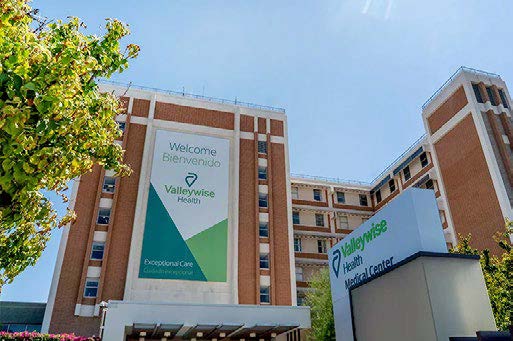

Metropolitan Anchor Hospital (MAH) Case Study: Valleywise Health | Arizona
Metropolitan Anchor Hospital (MAH) | Case Study
Overview
 Valleywise Health – formerly known as Maricopa Integrated Health System (MIHS) – has been caring for families and communities in the Phoenix area for more than 140 years. Established in 1877, Valleywise Health provides quality care to the people of Maricopa County in south-central Arizona and beyond.
Valleywise Health – formerly known as Maricopa Integrated Health System (MIHS) – has been caring for families and communities in the Phoenix area for more than 140 years. Established in 1877, Valleywise Health provides quality care to the people of Maricopa County in south-central Arizona and beyond.
Today, Valleywise Health is well known for operating regional health centers across rapidly growing Maricopa County, providing “exceptional care, without exception, to every patient, every time.” The system provides approximately 550,000 patient visits annually at a 325-bed medical center, the nation’s second largest burn center, a Level 1 adult trauma center, multiple behavioral health centers, Federally Qualified Health Centers, an HIV specialty clinic, and a dedicated refugee center.
Valleywise Health is also home to the Phoenix area’s only public teaching health system. One of the oldest and largest graduate medical education programs in Arizona, it became an approved teaching hospital in 1952. Through the Creighton University - Arizona Health Education Alliance, Valleywise Health trains the area’s next generation of physicians, nurses, and allied health professionals.
“At the end of the day, we are the poster child of a safety net hospital.”
Steve Purves
President & CEO of Valleywise Health
Patient–Payer Mix
Valleywise Health provides access to health care services to a disproportionately higher number of low-income and uninsured people in Maricopa County. Valleywise treats a high number of Medicaid and Medicare beneficiaries: both programs account for 85.7% of all visits, 65% of all discharges, and 41.4% of net patient revenue. Each year, Valleywise provides more than $44 million in uncompensated care.
Valleywise Health also delivers care to a diverse patient population. An estimated 57% of the patient population in ambulatory care settings are Latinx and nearly 10% are Black. More than 30% of patients are non-English speaking. Among its pediatric patients, 74% are Latinx, and 96% receive benefits through Arizona's Medicaid agency (Arizona Health Care Cost Containment System - AHCCCS), the Valleywise Health Financial Assistance Program, or are self-pay.
Valleywise Health's Unique Approach to Care
One aspect of Valleywise Health that makes it unique is that it is directly funded by the residents of the county it serves. The Maricopa County Special Health Care District Board of Directors – representing each of the county’s five districts – is the governing body for the district and Valleywise Health. In 2014, the county electorate voted to fund construction of the system’s new medical center, which helped transform this vital safety-net and public teaching hospital.
With financial support from the local community, Valleywise Health is able to offer the residents of Maricopa County access to world-class health care that addresses the medical, behavioral, and social needs of the community.
Integrated Behavioral Health (IBH) Services
Valleywise Health provides access to the full spectrum of behavioral health services and timely, compassionate, and evidence-based treatment.
Family Resource Centers
Valleywise Health offers educational programs such as parenting, literacy, computer, and cooking classes, as well as a number of supports and tools that promote healthful living.
Women’s Refugee Services
Multilingual, multicultural members of the refugee community serve as Cultural Health Navigators to educate and empower patients to access health care services. Additionally, the clinic hosts classes to help expectant mothers prepare for childbirth and newborn care. Through this program, Valleywise serves more than 3,000 women and children annually from 49 countries speaking 41 languages.
Metropolitan Anchor Hospitals Need Greater Support
Despite having made strides in improving clinical and community programs, operating efficiency, and expense management, Valleywise Health still faces challenges in meeting the needs of Maricopa County’s largely low-income and uninsured citizens. While some challenges of the pandemic have subsided, Valleywise Health continues to face financial insecurity, with no resources currently available in their safety net fund. Additional safety-net funding is needed to support greater investment in the community, particularly related to maintaining an adequate health care workforce, which has been Valleywise Health’s greatest challenge during the COVID-19 pandemic.
Valleywise Health, while unique in many ways, faces the same financial pressures as MAHs across the country. Without stable support, specialized programs designed to serve Valleywise Health’s traditionally marginalized populations will be put at risk. By defining eligibility criteria and a specific MAH designation, systems like Valleywise Health would have the opportunity to ensure financial stability into the future.


